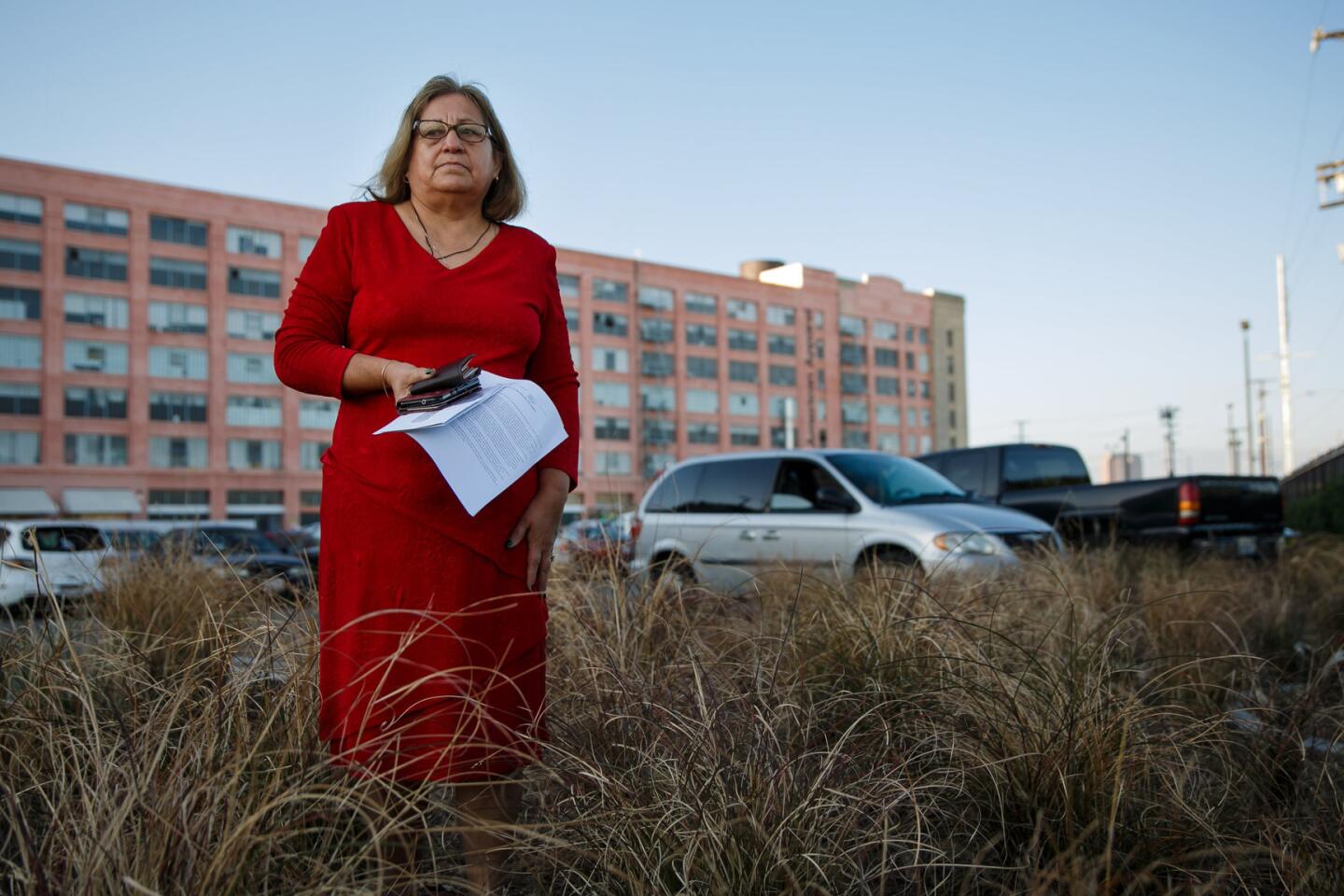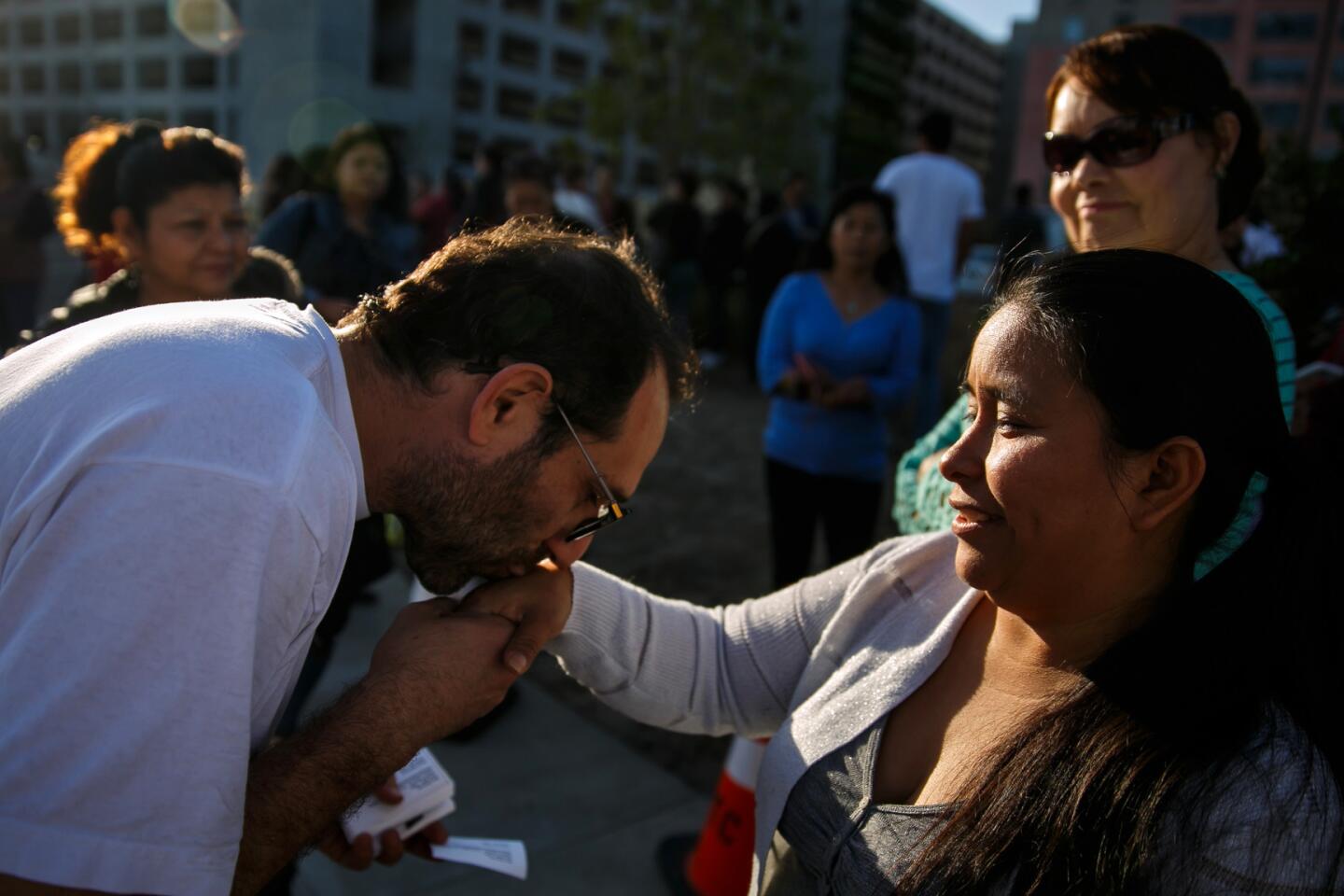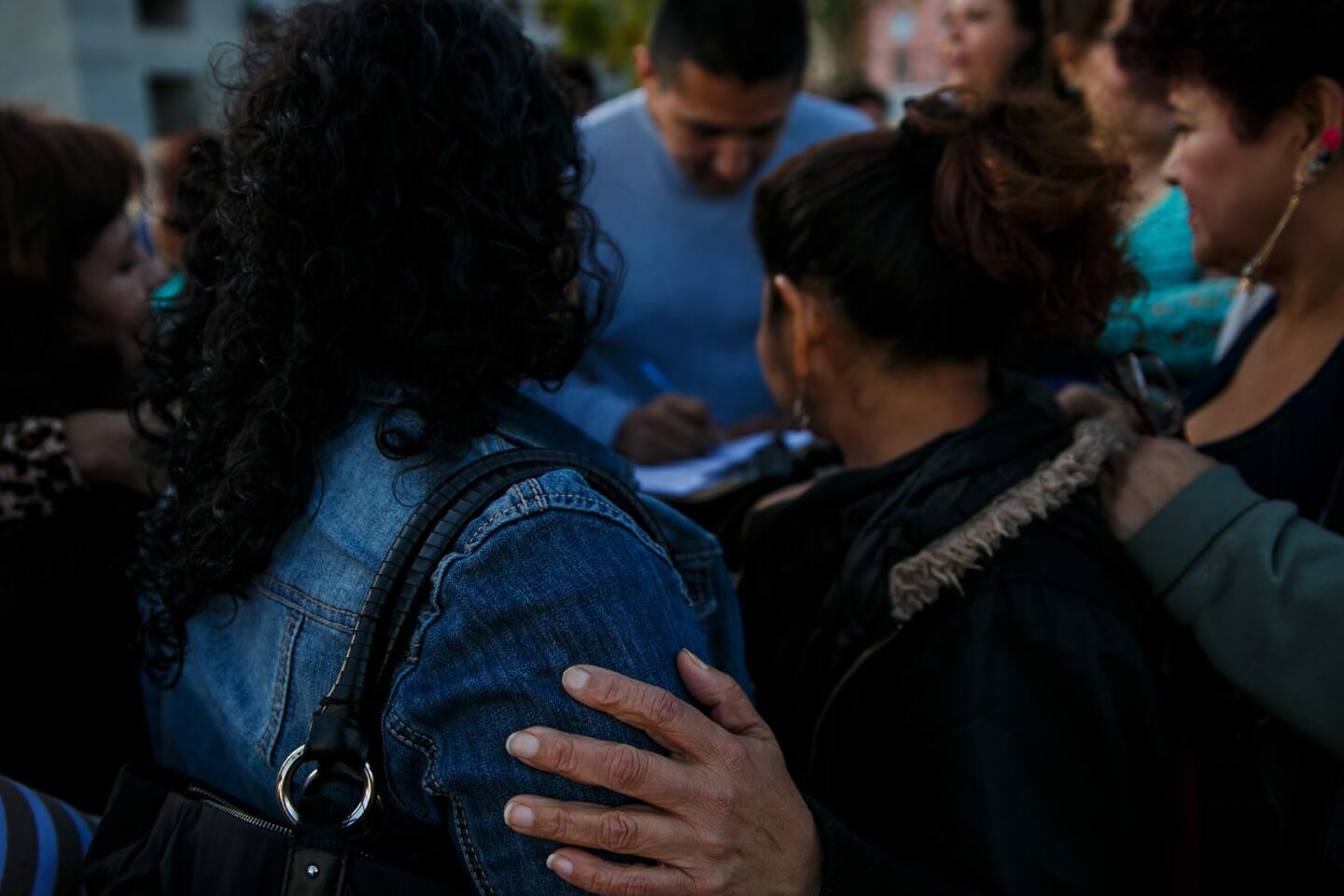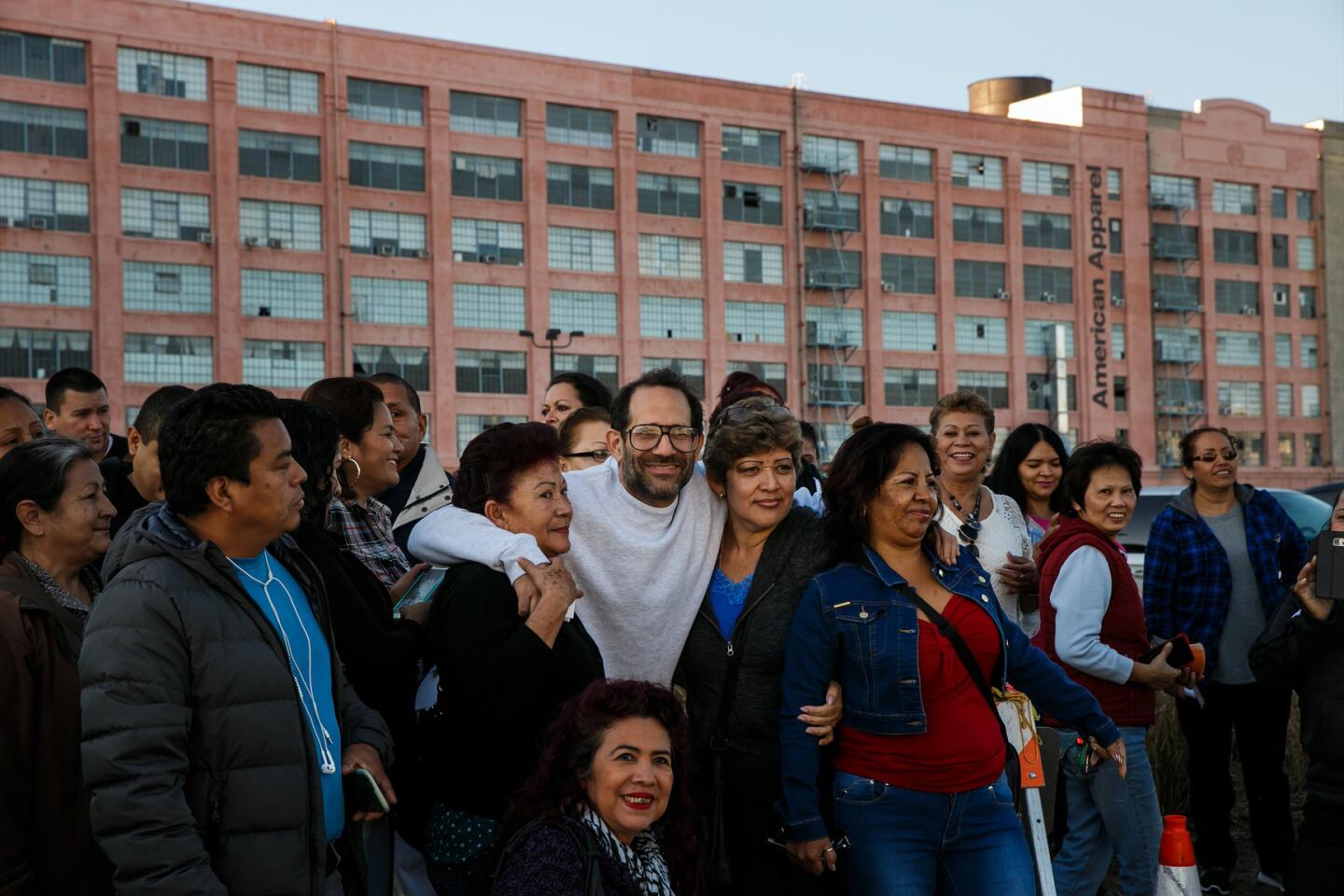American Apparel starts mass layoffs as company winds down operations

American Apparel once operated about 230 retail stores worldwide, but now operates 110. (Jan. 17, 2017)
- Share via
American Apparel was once a fashion industry trailblazer with its colorful basics, provocative marketing and commitment to U.S. manufacturing. But after years of financial strife and corporate intrigue, the company began laying off 2,400 workers in Southern California on Monday — kicking off its final chapter as the country’s largest garment maker.
The layoffs come as the company prepares to close or sell its factories in downtown Los Angeles, Garden Grove and South Gate. Its 110 retail stores are also expected to close within a few months.
The brand and some manufacturing equipment were sold at an auction in Bankruptcy Court last week to Canadian clothing maker Gildan Activewear for $88 million. Gildan had initially expressed interest in buying some of the company’s manufacturing operations, but later decided not to take over its stores or U.S. factories.
That decision sealed the fate of American Apparel, which moved to L.A. in 1997. Over the years, its controversial and charismatic founder Dov Charney grabbed headlines for his behind-the-scenes antics, but also for his deep commitment to U.S. manufacturing and fair wages.
At its peak, American Apparel raked in more than $600 million a year in sales and operated about 230 stores worldwide. But in recent years, it was left behind as it grappled with boardroom drama and the changing tastes of consumers.
“This is a sad day of reckoning,” said Lloyd Greif, chief executive of Los Angeles investment banking firm Greif & Co. “L.A. has always been a design mecca for apparel … but increasingly, they are having to offshore their operations. That’s the brave new world we are finding ourselves in in 2017.”
Gildan, which makes the bulk of its products in Central America and the Caribbean, has yet to decide whether to continue manufacturing American Apparel goods in the U.S.
Many factors contributed to the ultimate demise of American Apparel, analysts said. Turmoil has enveloped the company since its board ousted Charney as chief executive and chairman in 2014, citing allegations of sexual misconduct with employees and misuse of company funds.
That kicked off litigation and a merry-go-round of directors and top executives that distracted American Apparel from turning around the business. At the same time, the rise of fast-fashion rivals such as Forever 21, H&M and Zara drew away its young customers, who were also cutting down their clothing purchases in favor of gadgets.
“The global retail industry has faced strong headwinds across the board, and American Apparel has been no exception to this rule,” the company said Monday in a statement.
Charney, who is trying to launch a new clothing company, said he is “devastated and infuriated.”
“My heart goes out to the workers,” he said. “I tried my best to recapture the company but was unable to.”
Analysts said the company also stumbled by taking on debt to fuel its quick expansion of stores.
“There were these successive confluence of events that all helped the market move away from where American Apparel resided,” said Craig Johnson, president of research firm Customer Growth Partners.
The high cost of manufacturing in Los Angeles also contributed, analysts said, noting that California’s minimum wage will climb to $15 an hour in 2021.
Still, the failure wasn’t all about the economics, said Jane Hali, chief executive of investment research firm Jane Hali & Associates. “It was a case that the company lost its vision,” she said.
Until the sale closes in February, some workers are being kept on to operate the factories in downtown L.A. and in Garden Grove, as well as the distribution center in La Mirada. Some will also continue working in human resources and other departments to keep the company running. American Apparel’s 110 stores and its website will remain open, until at least April, under a 100-day license with Gildan.
On Monday, workers at the company’s headquarters in downtown L.A. said they were warned of mass layoffs, but had still been holding out hope that Gildan or another company would come in and save jobs.
Francesca Cortes, a seamstress who works on the overnight shift, said she was told to come into work Monday for a possible shift change. Instead of a new schedule, she got her final paycheck and a termination letter.
“Everything is over,” said Cortes, 48, who has worked seven years at American Apparel. “We didn’t even get severance, like the workers who were laid off before got.”
Everything is over. We didn’t even get severance, like the workers who were laid off before got.
— Francesca Cortes, seamstress
Amada Cervantes, 66, has been sewing in downtown L.A. for a decade. In the last few years, her pay has dropped to about $350 a week from $500 as workers’ hours have been cut.
“I’m worried because I am on my own,” Cervantes said. “I’m hoping unemployment will help until I find another job.”
Some workers will find employment with other Los Angeles garment and textile makers.
Broncs Inc., a Compton textile manufacturer, bought American Apparel’s Garden Grove knitting and dyeing facility and will keep about 200 employees.
Zack Hurley, chief executive of Indie Source, said he plans to hire at least a few dozen American Apparel workers for his contract manufacturing facility in downtown Los Angeles.
He hopes that other U.S. fashion brands will step up to fill American Apparel’s void and create more American manufacturing jobs.
“There needs to be a call to action,” Hurley said. “We can definitely take strides in hiring dozens, but to get to thousands there has to be an actual shift in thinking.”
Follow Shan on Twitter @ByShanLi
ALSO
What to expect in the workplace in 2017
Marijuana shops are trying to look like the Apple store
L.A. longshoreman sentenced to 41 months for bilking union healthcare plan
UPDATES:
7:30 p.m. This article was updated with comments from the company, founder Dov Charney and industry analysts. It was originally published at 2:40 p.m.
More to Read
Inside the business of entertainment
The Wide Shot brings you news, analysis and insights on everything from streaming wars to production — and what it all means for the future.
You may occasionally receive promotional content from the Los Angeles Times.
















